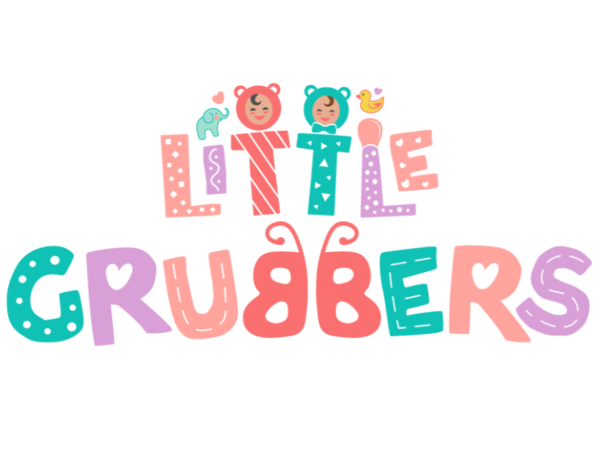Decoding Your Baby’s Hunger Cues
One of the biggest challenges new parents face is figuring out whether their baby is hungry, full, or just fussy. Since newborns and infants can’t say, "Hey, Mom, I’m ready for a snack!" understanding their hunger cues can feel like a guessing game.
The good news? Babies are naturally wired to communicate their needs, and with a little observation, you’ll start recognizing their feeding signs like a pro!
1. What Are Baby Hunger Cues?
Baby hunger cues are signals your little one gives to show they’re ready to eat. Recognizing these cues early helps you:
✔ Feed before they become frantic (preventing meltdowns!)
✔ Encourage responsive feeding, which strengthens bonding
✔ Reduce mealtime stress by making feeding smoother
💡 Tip: Babies don’t always cry when they’re hungry! Crying is actually a late hunger cue, meaning they’ve been hungry for a while.
2. Early, Active & Late Hunger Cues
Early Hunger Cues (Subtle Signs Your Baby is Ready to Eat)
🔹 Opening their mouth or smacking lips
🔹 Rooting (turning their head and opening their mouth)
🔹 Sucking on hands or fingers
➡ Best time to feed: When you notice early hunger cues, your baby is calm and ready to eat.
Active Hunger Cues (Your Baby is Getting More Eager!)
🔹 Moving their hands towards their mouth
🔹 Becoming more alert and wiggly
🔹 Making small fussing sounds
➡ Best time to feed: Your baby is still happy but getting more determined to eat.
Late Hunger Cues (Baby is Now Hangry!)
🔹 Crying or screaming
🔹 Arching their back
🔹 Turning red and becoming hard to soothe
➡ Best time to feed: If your baby is at this stage, they might need calming first before they can eat.
3. Recognizing Your Baby’s Fullness Cues
Just like hunger cues, babies also show when they’re full and done eating. Overfeeding can lead to discomfort and tummy troubles, so it’s important to respect their fullness signals.
🍼 Signs Your Baby is Full:
✔ Turning their head away from the bottle or breast
✔ Closing their mouth or refusing to latch
✔ Slowing down sucking or stopping altogether
✔ Becoming easily distracted
✔ Pushing food away (for older babies)
💡 Tip: Trust your baby’s appetite. If they show signs of being full, don’t force extra bites—it helps them develop healthy eating habits for life!
4. Why Responsive Feeding Matters
Responsive feeding means tuning in to your baby’s hunger and fullness cues instead of following a strict schedule. This approach helps your baby:
✔ Build a healthy relationship with food
✔ Learn to eat intuitively (knowing when they’re hungry or full)
✔ Feel secure and cared for, strengthening parent-baby bonding
💡 Tip: If you’re starting solids, let your baby explore different textures and self-feed with tools like the Little Grubbers 3-in-1 Baby Spoon™—perfect for tiny hands!

5. Common Mistakes to Avoid When Reading Hunger Cues
Even the most observant parents can misinterpret signals! Here are a few common mistakes to watch for:
🚫 Mistaking Every Cry for Hunger – Babies cry for many reasons (sleepiness, boredom, discomfort), not just hunger! Try soothing first before offering food.
🚫 Overfeeding for Comfort – It’s easy to use feeding as a quick fix when a baby is fussy, but sometimes they just need a cuddle instead of more milk or food.
🚫 Ignoring Fullness Signs – Pressuring your baby to “finish the bottle” can lead to overeating and make them less responsive to their natural appetite.
💡 Tip: If your baby is fussy but not showing hunger cues, try other soothing techniques like rocking, singing, or a pacifier.
6. How Hunger Cues Change as Your Baby Grows
🍼 Newborns (0-3 months): Hunger cues are mostly rooting, sucking, and hand-to-mouth movements.
🥣 Babies (4-6 months): They become more expressive—leaning towards food, making excited noises, and opening their mouth wide when they see a spoon.
🍎 Older Babies (7-12 months): They may point to food, grab spoons, or use baby sign language (like tapping their mouth) to signal hunger.
💡 Tip: Teaching simple baby signs for “more” and “all done” helps babies communicate mealtime needs before they can talk!
7. Make Mealtimes Easier with the Right Tools
Understanding hunger cues is just one piece of the feeding puzzle—having the right tools can make a big difference too!
🥄 The Little Grubbers 3-in-1 Baby Spoon™ is designed to support your baby’s feeding journey by:
✔ Encouraging self-feeding with an easy-to-grip design
✔ Being gentle on gums (perfect for teething babies!)
✔ Reducing food spills and mess
👉 Click here to check out the Little Grubbers 3-in-1 Baby Spoon™ and make feeding time stress-free!
Final Thoughts: Trust Your Baby’s Cues
Every baby is unique, but learning to read their hunger and fullness cues makes feeding easier, more enjoyable, and stress-free. Trust your baby’s signals, stay patient, and remember—you’re doing an amazing job! 💛

